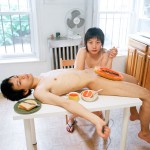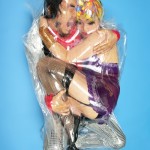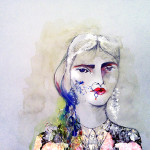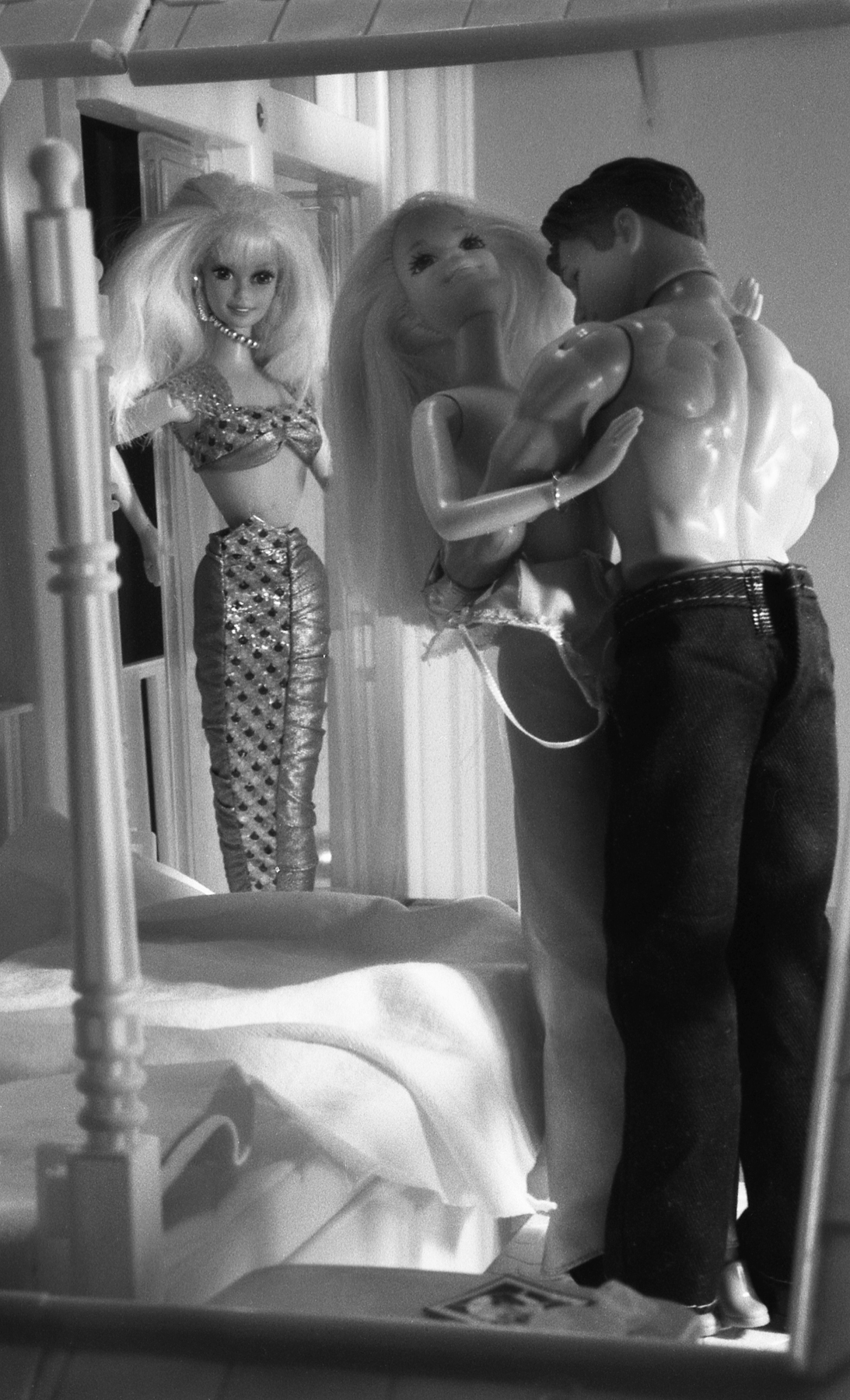
If you have ever wondered what Barbie and her friends do once playtime is over, then the photographs of Sarah Haney will give you an idea..Sarah Haney’s artwork portrays the dark side of life in the Dream House: behind Barbie’s smile there is the obsession with her body, Ken’s quest for sexual gratification, all the dirty little secrets they attempt to hide as they present themselves as icons of the American Dream.
Check below what Sarah Haney revealed to us during our interview, if you would like to see more of her artwork visit http://www.sarahhaney.com/
What is your background? How long have you been a photographer?
I have a BFA from the University of Colorado-Boulder, with an emphasis in Drawing and Painting. I moved from painting to photography about 12 years ago.
What was the inspiration behind your doll photography?
It started as kind of a joke- I was thinking about how it always bothered me when I played with Barbie as a kid that she never stopped smiling, no matter what. I started imagining what a really inappropriate time for her to smile would be, and thought it would make a fun photo. So I went to the thrift store, bought a couple of dolls, and started shooting.
How do you develop the concept of Barbie in “compromising positions”?
It developed from my original concept after I started shooting the images in which the main idea is just the absurdity of her grinning while watching Ken with her best friend or whatever. As I worked, I found myself putting her in more realistic situations and trying to capture the appearance of emotion in spite of the fixed expression on her face. Those were the photos that resonated with me the most, so I worked in that direction.
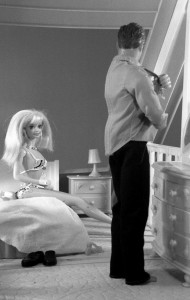
Picture Credit: “You Knew I Wouldn’t Leave My Wife”, Sarah Haney
Is one of your goals to show humor in these situations or is it strictly a feminist statement?
Humor is absolutely one of the goals. It’s meant to be funny, but with an edge.
What is the underlying message you wish to impart to viewers?
Barbie, to me, is a symbol of a very materialistic, appearance-oriented lifestyle. She’s all about the accessories- the perfect boyfriend, car, clothes, etc. That seems like a really exhausting, unfulfilling way to live. By depicting what’s happening underneath that perfect façade, I’d hope viewers would question the value to fixating on appearance, or of being fascinated by someone simply because she’s famous, no matter what the reason for her fame.
What is it about Barbie as a concept that represents a stereotype of a woman addicted to plastic surgery or lacking intelligence? Are those separate issues?
I would consider them separate- a person could be very bright but also addicted to plastic surgery (or to any number of other things). Barbie and plastic surgery- that body is not natural. Someone figured out what her proportions would be if she were real- I don’t remember exactly what the height/weight ratio was, but she would have to have had ribs removed to make her waist that small. To me, altering yourself to that degree would indicate some sort of emotional issues, but that doesn’t equate to a lack of intelligence. As far as Barbie’s brains, I don’t think her reputation ever really recovered from the time when one of the talking doll’s phrases was “Math class is tough!”. In my mind, she’s not necessarily unintelligent, but she’s the woman who, sometime around junior high, noticed that the conspicuously smart girls weren’t winning any popularity contests and buried any appearance of intelligence so deep that she forgot it was even there.
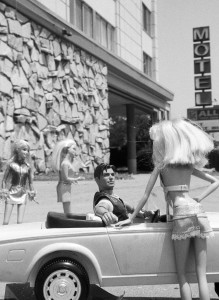
Picture Credit: “Hey There, Handsome”, Sarah Haney
Do you think that we live in a society where attractive women find it difficult to be taken seriously because of their physical appearance?
It’s much easier to be taken seriously if you’re pretty- but not too pretty. If a woman is really unattractive (or a man, for that matter, but to a lesser degree), I think people tend to discount her; if she’s really stunning, people assume she’s all looks and no brains.
Is there an alternative view that Barbie can embody the female emancipation? Mixing beauty and power? Can her smile stand for achievement and success?
If you wanted to interpret it that way, I’m sure you could make a good case for it, but something about her just looks so vapid to me.
What is the challenge of taking pictures of miniature inanimate objects?
It’s really difficult to get the scale right when I’m shooting outside- I need to have exactly the right distance between the dolls and the full-scale objects to make them look proportionate. It’s easy to miss something- a parking meter or a little rock on the sidewalk- that will throw everything off. It’s much easier when I’m setting things up in my studio, but that only works for interior shots. It’s also really challenging to work with the dolls because, as anyone who played with them knows, they don’t stand up well on their own. I usually end up having to set up the whole scene multiple times because Barbie falls over and takes out half the set.
What are your photography plans for the future?
I’m currently experimenting with alternative digital techniques- I’ve been one of the last film holdouts, but I want to do some mixed media work, and I think digital will work better for what I have in mind. Right now I’m still in the planning stages, but I think my next set of pieces is going to focus on fairy tale imagery.






